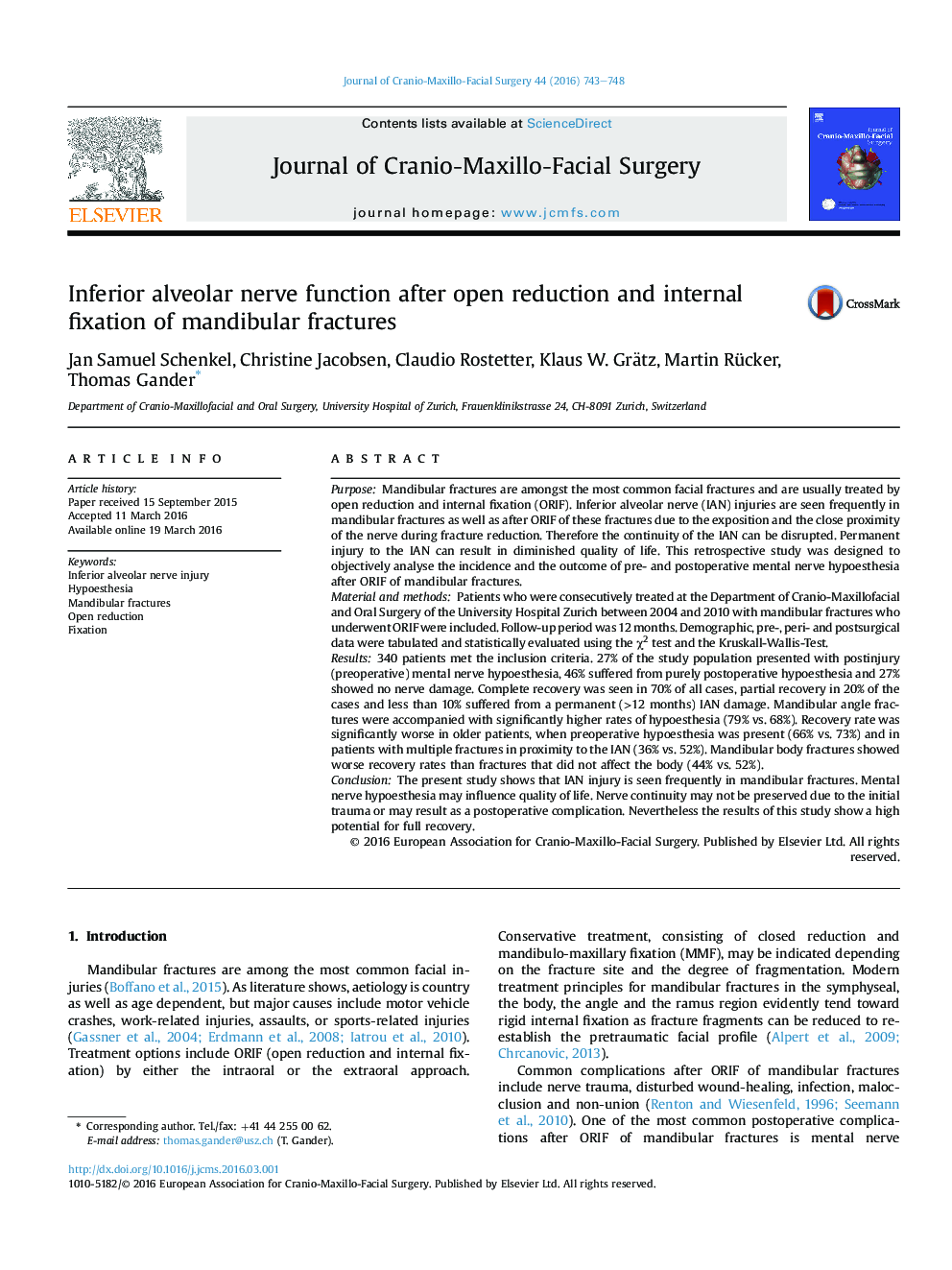| کد مقاله | کد نشریه | سال انتشار | مقاله انگلیسی | نسخه تمام متن |
|---|---|---|---|---|
| 3142064 | 1196766 | 2016 | 6 صفحه PDF | دانلود رایگان |
PurposeMandibular fractures are amongst the most common facial fractures and are usually treated by open reduction and internal fixation (ORIF). Inferior alveolar nerve (IAN) injuries are seen frequently in mandibular fractures as well as after ORIF of these fractures due to the exposition and the close proximity of the nerve during fracture reduction. Therefore the continuity of the IAN can be disrupted. Permanent injury to the IAN can result in diminished quality of life. This retrospective study was designed to objectively analyse the incidence and the outcome of pre- and postoperative mental nerve hypoesthesia after ORIF of mandibular fractures.Material and methodsPatients who were consecutively treated at the Department of Cranio-Maxillofacial and Oral Surgery of the University Hospital Zurich between 2004 and 2010 with mandibular fractures who underwent ORIF were included. Follow-up period was 12 months. Demographic, pre-, peri- and postsurgical data were tabulated and statistically evaluated using the χ2 test and the Kruskall-Wallis-Test.Results340 patients met the inclusion criteria. 27% of the study population presented with postinjury (preoperative) mental nerve hypoesthesia, 46% suffered from purely postoperative hypoesthesia and 27% showed no nerve damage. Complete recovery was seen in 70% of all cases, partial recovery in 20% of the cases and less than 10% suffered from a permanent (>12 months) IAN damage. Mandibular angle fractures were accompanied with significantly higher rates of hypoesthesia (79% vs. 68%). Recovery rate was significantly worse in older patients, when preoperative hypoesthesia was present (66% vs. 73%) and in patients with multiple fractures in proximity to the IAN (36% vs. 52%). Mandibular body fractures showed worse recovery rates than fractures that did not affect the body (44% vs. 52%).ConclusionThe present study shows that IAN injury is seen frequently in mandibular fractures. Mental nerve hypoesthesia may influence quality of life. Nerve continuity may not be preserved due to the initial trauma or may result as a postoperative complication. Nevertheless the results of this study show a high potential for full recovery.
Journal: Journal of Cranio-Maxillofacial Surgery - Volume 44, Issue 6, June 2016, Pages 743–748
